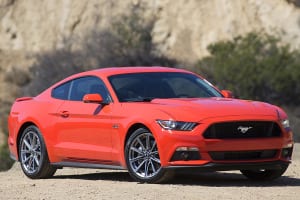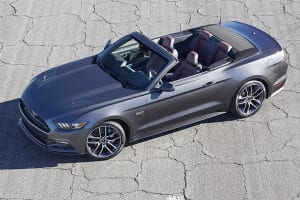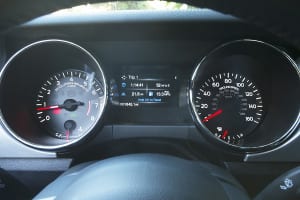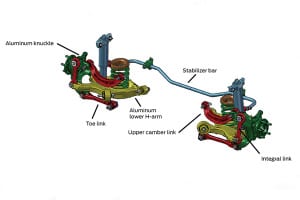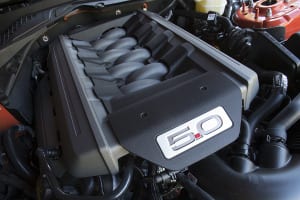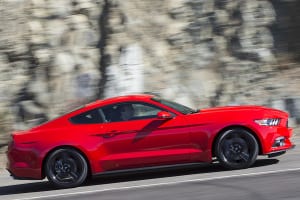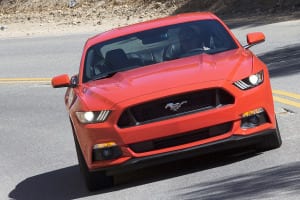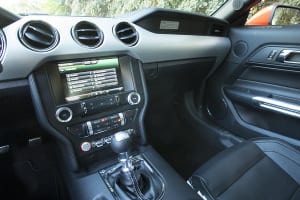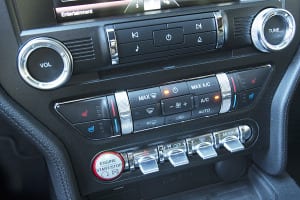It’s Been 50 years since the first Ford Mustang.
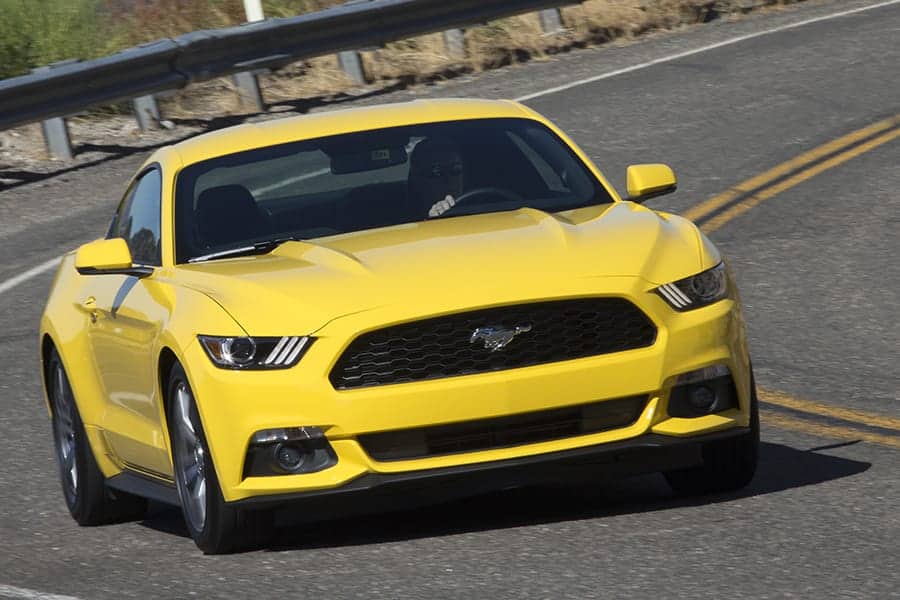
It’s been 50 years since the first Ford Mustang was launched at the New York World’s Fair. Ford estimated it would sell some 100,000 Mustangs the first year. Instead, the automaker retailed that many in the first three months. We’ve now had five generations of the car that sparked the “pony car” revolution. Ford has sold more than 9 million Mustangs.
In that half century, Ford reshaped the Mustang to fit what it thought should be the correct direction for the sporty car for the times. Sometimes Ford was right, other times wrong. We offer the now-legendary 1969-70 Boss 302 on the right side…and the Pinto-based Mustang II on the wrong side.
Mustang, like Chevrolet’s Camaro and Dodge’s Challenger, has always been considered a car for the U.S. Ford wants to change that and make the sixth-generation Mustang a world car. The evidence came with the December 5, 2013 unveiling of the new Mustang held jointly in New York City, Los Angeles, Barcelona, Shanghai, Sydney and Ford’s home, Dearborn, Michigan.
As with the 911 and Mini, restyling the Mustang is a tough balancing act. An up-to-date one needs to look new, fresh and contemporary, but also retain the basic shape that has made it famous. Christopher Svensson, Ford’s Design Director, The Americas, explains they went back to the 1965-1967 Mustangs as inspiration for the 2015 machine. Svensson has a restored 1965 Mustang in his garage. Many of those who worked on the new car’s design, engineering or development own vintage Mustangs and they stay in close contact with the Mustang clubs.
Svensson points out they integrated modern headlamps and updated sequential taillights, but the flow along the fender tops and the indentations in the doors are a reflection of those first Mustangs. The doors and broad rear fenders make the Mustang shape more muscular, a bit sexier. And, Ford hopes, more appealing to woman than past Mustangs.
First thing you notice in the interior is the left-right symmetry of the dashboard, making it possible to build the car with left- or right-hand drive. Also apparent is the impressive amount of knee room on the passenger side, made doable in part by mounting the airbag in the glovebox door.
Gauges are as expected in two dials where Ford shows a bit of humor by listing “ground speed” of its ground-bound Mustang in the speedometer. There was a large infotainment/navigational screen in our test car, below that a strip of audio controls, then the heating/air condition buttons and, at the bottom, a row of toggle switches.
Seat comfort is on a par with the Mustang’s performance, which is to say impressive. The back seat space is tight, the Mustang a 2+2, not a four seater.
Ford has been very successful creating a series of chassis platforms that can be adapted to various types of vehicles around the planet. That didn’t work with the Mustang, which has an entirely original platform. Some inherited parts, of course, but the fundamentals are new.
Best Mustang news is the independent rear suspension.
Best Mustang news is the independent rear suspension. Ford had intended to use the MacPherson strut suspension from the previous Mustang…until engineers matched the new independent rear suspension to the old front suspension, which now proved inadequate. So there is a new MacPherson strut front design with a subframe instead of the old crossmembers to add stiffening. That new front design allows for much larger brakes.
Mustang now has three engine options, all with 300 horsepower or more. Base is a 3.7-liter 24-valve V-6 with 300 horsepower and 280 lb-ft of torque. Next comes the 2.3-liter turbo EcoBoost four rated at 310 horsepower and 320 lb-ft of torque. The classic Mustang motor is the 5.0-liter V-8, now urged to 435 horsepower and 400 lb-ft of torque. All three engines can be backed by a 6-speed manual or automatic transmission.
We didn’t get to drive the Mustang convertible, but it also has the full redesign. Developed in parallel with the 2+2’s structure, the convertible body 15 percent stronger in torsional stiffness, the coupe 28 percent better. The five-bow folding top structure is covered by a full fabric outer surface and complete inner liner with a 10-mm thick insulation pad in between. There is now a single center latch for the top and the time to lower or raise the ragtop has been cut in half.
We drove two Mustangs, an EcoBoost four with the automatic and a V-8 fitted with a manual. Early timings show the 0-60 mph time for the EcoBoost to be around 5.6 seconds, roughly 0.8 seconds quicker than that legendary Boss 302, which had none of today’s low-emission equipment. Don’t you love progress? The V-8 makes it to 60 in 4.5 seconds and has the throaty rumble we’ve come to love from these engines.
For an in-depth instrumented look at the 2015 Mustang, here’s a link the Car and Driver test of the V-8 GT:
Ford lists the weight of the EcoBoost coupe at 3524 pounds balanced 52 percent front/48 percent rear. On the scale the V-8 comes in at 3729 pounds, 53 front/47 rear. Rush the two down a curving road and difference is surprising.
The EcoBoost feels nicely balanced, tucking neatly into even tight corners, steering direct, the power coming back quickly, the entire car feeling like you and it are in harmony. This version of the Mustang feels European, like a machine you’d enjoy on an Alpine pass road.
By contrast, the V-8 GT feels all American and it seems like it–not you–could be in charge. The engine makes the right noises, goes like the wind in a straight line and isn’t a problem in cornering, but feels heavier than the extra 200 pounds in curb weight would suggest.
As in many performance cars these days, there are adjustable levels of handling and steering. Those toggle switches take you through Normal, Sport, Sport Plus and Track. We worked with them a great deal on twisting, bumpy canyon roads and decided Sport was the best, keeping the car both stable and surprisingly smooth despite the uneven surfaces.
In addition to all this are specific performance packages for the EcoBoost and GT versions, items like stiffer springs and stabilizers, bigger brakes and tires. There’s even an optional electronic line lock. This allows the driver to lock the front brakes while the rears are unlocked. The locking lasts for 15 seconds and is a common extra for drag racers so they can heat their rear tires before a start, but allows drivers to make spectacular burn-outs just for fun. Hokey, perhaps, but fun.
Ford lists the fuel mileage as 19 mpg city/28 mpg highway for the V-6, 21/32 with the turbo four and 16/19 if you have the V-8 (all those with the automatic transmission).
Mustang prices start at $23,600 (plus $825 shipping) for the coupe and $29,100 with the convertible. That’s for the base V-6 model, with a bump to $25,170 for EcoBoost coupe and $32,100 if you opt for the V-8. Prices can easily climb, our well-equipped EcoBoost coming in just over $34,000 with GTs getting into the $40,000 range.

-John Lamm
